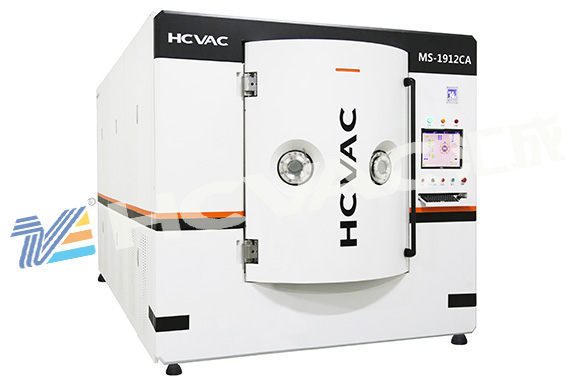When we first learned about or just came into contact with the vacuum coating machine industry, many people were curious about why the evaporation vacuum coating equipment must be in a vacuum state to evaporate the coating materials, and the vacuum coating must meet certain standards. The following is a detailed introduction of vacuum, hoping to help everyone:

The film material cannot form an ideal film under normal pressure. In fact, if the pressure is not low enough (or the vacuum degree is not high enough), good results cannot be obtained. For example, when aluminum is evaporated at the level of 102 torr, the film obtained is not only not bright, but even gray and black, and the mechanical strength is extremely poor. A gentle brush with a squirrel brush can destroy the aluminum layer.
The evaporation must be carried out under certain vacuum conditions because:
1. Higher vacuum degree can ensure that the average free path of vaporized molecules is greater than the distance from the vaporization source to the substrate. Due to the thermal movement of gas molecules, collisions between molecules are also extremely frequent. Although the speed of gas molecules is quite high (up to hundreds of meters per second), it has to collide with other molecules for many times in the process of moving forward. The distance a molecule travels between two consecutive collisions is called its free path, and the statistical average of a large number of molecular free paths is called the molecular average free path.
Since the gas pressure is proportional to the number of molecules per unit volume, the average free path is also proportional to the gas pressure. In the process of vacuum deposition, when the deposition distance is greater than the average free path of molecules, it is called low vacuum deposition, and when the deposition distance is less than the average free path of molecules, it is called high vacuum deposition. During high vacuum deposition, the collision between the evaporated atoms (or molecules) and the residual gas molecules can be ignored. Therefore, the vaporized atoms fly to the substrate in a straight line, so that the vaporized atoms that maintain greater kinetic energy and reach the substrate can be condensed on the substrate to form a stronger film. In low vacuum deposition, the speed and direction of the vaporized atoms will change due to the result of the collision, and it may even generate steam atom aggregates in space - the reason is similar to that water vapor generates fog in the atmosphere.
2. The pollution of residual gas can be reduced under higher vacuum degree. In the case of low vacuum degree, the vacuum chamber contains many residual gas molecules (oxygen, nitrogen, water, hydrocarbons, etc.), which can bring great harm to the film plating. Their collision with vaporized membrane molecules shortens the average free path; They collide with and react with the surface being filmed; They hide in the formed film and gradually erode the film; They are combined with the evaporation source at high temperature to reduce its service life; They form an oxide layer on the surface of the evaporated film material, which prevents the evaporation process from proceeding smoothly.
Therefore, if the evaporation
vacuum coating machine wants to coat the film, it must be in a vacuum state before coating, so that the film can be firm and free of pollutants.



